As La Salle Gets Ready to Return to Campus, Teachers Share Their Thoughts
After almost a year of distance learning, teachers and students will soon be returning to on-campus instruction.
January 20, 2021
Throughout the last year, educators have managed unprecedented challenges.
Having switched abruptly to online instruction last spring and continuing into the new school year, they have worked to adjust to the obstacles of distance learning: Teaching classes without ever meeting students face to face. Talking at a Zoom screen, asking questions to a digital grid of muted cameras, many displaying ceiling paint. Delivering lessons and lectures while also making lunches, changing diapers, or helping complete online learning assignments with their own children at home.
With much on their minds between Zoom calls and ungraded assignments, teachers are met with another task as the first semester concludes: Prepare to shift their dynamic yet again, this time moving back into their physical classrooms rather than joining students each day in an online meeting room.
With the announcement of the hybrid format and the return to campus plan, which La Salle will begin to implement during the first weeks of February, a variety of opportunities unachievable in the distance learning format are opened up to teachers; simultaneously, an array of new questions and concerns arise, leaving many teachers apprehensive about returning to campus at this time.
“Obviously, we all want to get back to normal, we want to be in the classroom,” science teacher Ms. Amanda Schieber said. “However, I do have some serious concerns about the timing of this, the way cases are so high right now, and vaccines are just starting to come out… I think it’s taking a pretty big risk, and if we just waited a little bit longer, I think things would be a lot safer.”
Several teachers The Falconer spoke with said that while they miss the ideal face-to-face interaction with students, they would feel more comfortable returning to in-person school once inoculations of the newly-approved coronavirus vaccines are more widespread in the community.
Vice Principal of Student Life Mr. Brian Devine said that with the lack of connection caused by distance learning, the school wants to prioritize bringing students on campus to help improve mental well-being.
“That’s been a request for as long as we’ve had COVID going on,” Mr. Devine said. “There’s been that parent voice that has requested that we bring students on campus. And we know that in terms of students’ well-being, in terms of their mental health, in terms of their social well-being, that having students on campus and with one another would be the best thing. So it’s been just a matter of trying to figure out how to do that safely.”
The U.S. virus death toll has now surpassed 400,000, and infection rates in the United Kingdom and Ireland are skyrocketing due to the more contagious coronavirus variant B.1.1.7 — which has also been identified in the U.S., including in Oregon. In addition to this, vaccine distribution has progressed slower than expected.
Though federal health officials set a goal for 20 million people to receive first doses of the vaccine by the end of 2020, current numbers from the Center for Disease Control and Prevention said that 14.3 million people have received at least their first shots and 2.2 million people have been fully vaccinated.
“I think it’s unwise to not wait for a vaccine, at least for teachers, because we have teachers who are at risk for COVID,” religious studies teacher Mr. Ryan Darmody said. “If they contract COVID, it could be life threatening for them… I think it would be prudent to wait until educators are vaccinated.”

Oregon Gov. Kate Brown announced on Jan. 15, after the federal government fell through on its pledge to ship more vaccine doses to states, that she would continue with her plans to prioritize day care, preschool, and K-12 employees, most of whom will be eligible to receive first shots beginning Jan. 25.
Still, with the slow pace and chaotic nature of the vaccine rollout so far, it will likely take a few weeks after eligibility starts for all teachers to receive their first doses. Both approved vaccines require two separate shots — Pfizer-BioNTech’s with three weeks in between doses, and Moderna’s with four — so even if teachers receive their first shots as early as Jan. 25, they will not be fully vaccinated before returning to campus.
“Teachers are losing sleep over this,” Mr. Darmody said. “Many teachers have written to me about the anxiety they’ve been feeling since the announcement, about how they have had a hard time sleeping. And so, the more questions we have answered, hopefully it starts to ease the anxiety, but the only thing I know that would fully ease anxiety is if we had vaccines before we started teaching.”
Mr. Devine said that there has been a variety of feedback from teachers, with some feeling more comfortable than others teaching in person.
“There’s definitely a group of teachers that feel that we need to be a little more cautious about returning,” Mr. Devine said. “We’re just having individual conversations with teachers and staff members who are expressing concerns and trying to identify what their concern is… and if there are any accommodations or individual adjustments that we can make for teachers that would help them to feel more comfortable.”
Interim Principal Ms. Alanna O’Brien spoke similarly, saying that the administrative team is “doing our best to listen to those concerns and make accommodations where we can.”
Teachers are able to fill out a form to request an accommodation and voice their reasoning for doing so. Mr. Devine said that requests will be handled on a case-by-case basis.
“Everybody’s situation is different, and everybody’s challenges are different, and comfort levels are different,” Mr. Devine said. “So I think it’s going to be on an individual basis, and that will be something that is communicated individually between teachers and administrators.”
While students can choose to remain in distance learning rather than returning to campus, teachers aren’t necessarily offered the same option — with some students physically in the classroom, staff members will need to be there to monitor and instruct.
“Nobody, when they went into education, expected this,” Ms. O’Brien said of the challenges teachers face with the pandemic. “All you have to do is pick up a newspaper to realize that this is hard for teachers anywhere in the country. And we’re doing our best to address those concerns… Obviously, we can’t make hybrid instruction work if we don’t have people in the building, so it’s a tricky balance.”
Teachers were involved in developing the hybrid model itself, as it was in the works over the summer. But with Gov. Brown’s previous mandate for counties to reach certain metrics in COVID-19 case counts before returning to campus, La Salle entered the academic year in distance learning and stayed that way throughout the semester, placing the hybrid model in the backseat as the school focused on digital instruction.
However, after Brown eliminated these mandates on Dec. 23, instating them instead as advisory metrics and allowing school districts to decide independently about returning to campus, La Salle’s decision to shift to in-person instruction was made by the school administration: Ms. O’Brien, Mr. Devine, President Mr. Andrew Kuffner, Vice Principal of Academics Ms. Kathleen Coughran, Executive Director and CFO Mr. Matthew Winningham, Vice President of Foundation and Major Gifts Ms. Andrea Burns, Admissions Director Ms. Katie Allen, Director of Human Resources Ms. Mary Neil, and Athletic Director Mr. Chris George.
The decision, Ms. O’Brien and Mr. Devine said, was informed by surveys administered to families and staff in earlier months, as well as by discussion with other local Catholic high schools.
“When the governor closed schools under her emergency order [in the summer] and we didn’t have an option to open, one of the things we told our families is that we would not close for a set amount of time, but try and be flexible, so that we could get kids on campus if possible,” Ms. O’Brien said. “We were not expecting the Dec. 23 announcement that metrics were now no longer mandatory. That was a surprise to us, but we were also aware that we had let our families know that, up until that point, we hadn’t been able to do anything. And on Dec. 23, we became aware that we could potentially do something as early as Jan. 1.”
Released from the constraints of the previously mandatory metrics, the administrative team then “dusted off” the hybrid plan that had been developed during the summer, Mr. Devine said, and decided to bring students back to campus for the second semester.
Yesterday, Jan. 19, the Oregon Department of Education released new updates to the Ready Schools, Safe Learners guidance, meant to provide district leadership with advice and resources to be able to make informed decisions based on local case rates. The new guidance adds an updated requirement that if schools return to campus without having met the advisory metrics, they must offer access to on-site COVID-19 testing for symptomatic students and staff and anyone with known exposure to individuals with COVID-19 by March 1.
In terms of the decision to return, “there were a number of different pieces to the conversation that I think were influential,” Mr. Devine said. “A growing concern for student well-being, for academic growth. Recognizing that our teachers have done a tremendous job with the distance learning model — I think our students are always happy to have been receiving a great education, but there’s really no replacement for an in-person connection and relationship with teachers. And I think that was something that we’ve all been yearning for, and teachers have been looking forward to that, students are looking forward to that.”
Several teachers said that ideally, they would like to be connecting with students in person, but that they also feel that it is unsafe to return at this time.
“In general, I want to be back in the classroom with my students, that’s how I want to teach,” Mr. Darmody said. “[But] as someone who has taken every precaution throughout the pandemic, it feels risky to let go of precaution… [and] spend consistent indoor time with anyone in an enclosed space.”
Mr. Darmody said that while “there’s been a good amount of thought put into the plan to make it safe,” he can’t know whether students are following COVID-19 prevention guidelines outside of school.
“It’s just a lot of mixing of a lot of people at a time when COVID is spiking higher than it’s been,” he said. “That’s why it’s another reason, not just [for] waiting for the vaccine, but waiting for numbers to dissipate. We’re not at a moment right now where there’s a low point in COVID cases — it’s literally as high as it’s ever been.”
Math teacher Mr. Larry Swanson also expressed concern with the amount of people he will come in contact with. Throughout the pandemic, he has limited his contact to six people, creating a bubble that he said he hasn’t “really stepped out of.”
“It will be a big change — the bubble will go from six to 6,000, when you count everyone else’s bubble,” Mr. Swanson said. “There are kids… who have cancer, who are undergoing chemotherapy and radiation, and there are kids who have parents at home who are doing the exact same thing. So they can’t afford to be flippant about it. It’s something that I worry about. I feel like it’s inevitable right now, which means that I just need to get used to the idea.”
With safety protocols set in place in the return to campus plan, the administrative team feels that the hybrid model can be carried out safely. Ms. O’Brien said that the team will continue to track case counts as the second semester approaches, and that the school’s “biggest priority is doing this safely.”
“This isn’t about dress code and wearing leggings to school on a Tuesday,” Ms. O’Brien said. “This is about people’s lives and their health. And so, making sure that if a student is going to choose to come on campus, that they pledge to follow the guidelines. That would be my number one concern, so that we can take care of each other.”
Mr. Devine echoed the importance of enforcing safety guidelines.
“There needs to be a recognition among students that this isn’t a dress code violation,” he said. “It’s different from wearing a hat in the hallways, or wearing athletic shorts on a day that isn’t a Falcon Friday. Potentially, it could be a matter of life and death for people. We have to have that in front of us, that someone could get seriously ill, that someone’s livelihood could be at risk, someone’s life could be at risk, if we don’t follow these protocols… [It’s] going to be a pretty somber message, and a pretty serious message to students, that we are taking this really seriously, and we need them to as well.”
Aside from safety concerns, several teachers acknowledged there can be benefits to in-person learning, even if just half of the student body is on campus at once.
Having been away from in-person school for almost a year now, many students have experienced a lack of connection and a struggle to engage in learning. The isolation and stress of the pandemic has doubtless been detrimental to people’s mental health everywhere. Though some students have been successful in managing the online format, others are in need of an academic environment in order to focus on school. And teachers struggle with the digital structure as well — with less engagement over Zoom, it’s difficult to read the energy and feedback of a class.
The decision to shift to the hybrid format aims to combat these social and educational downfalls of the pandemic.
“I think it’s going to be a game changer to have students in a classroom with the teacher,” Mr. Devine said. “There is just something different about engagement when students are in front of a teacher and are able to have that conversation, and you think about some of the amazing teachers we have here, students are going to really welcome being back in those classrooms.”
Mr. Devine said that as students have been “missing school and they’ve been missing their friends,” he thinks that in-person learning will not only help revitalize the social aspect of school, but also improve learning.
Ms. O’Brien said that even for students who have not particularly been struggling with the online format, the lack of everyday connection with others can take a toll on mental well-being.
“Being able to say ‘hi’ to somebody in person, or even if you only have half of your student body on campus at a time, just the joy that it brings to actually have a real conversation with somebody, even from six feet,” is important, Ms. O’Brien said.
Several teachers recognized the potential benefits of the hybrid model compared to the current distance learning format.
“I think students might maybe feel more comfortable asking questions, for example, if the teacher can come six feet away from them and talk to them, versus trying to get help over the Zoom,” Ms. Schieber said. “It’ll probably be a little easier to sort of read the classroom, read the room and how people are feeling, with the hybrid learning.”
Mr. Darmody said that he has some students who are “almost completely non-responsive on Zoom,” and who he hasn’t been able to reach via Schoology message or after class, and haven’t turned in missing assignments. Being able to teach in person could allow him and other teachers to connect with and better support these students, which Mr. Darmody said “jumps to mind” as one benefit of returning to campus.
“I know what has been most effective in my career, for helping students who are struggling, is to be face to face with them, even if it has to be six feet apart,” he said. “To be in the same room, to show them that I care, and to be able to express it more clearly than through Zoom, through a computer camera and screen, hopefully helps the students that are having the hardest time.”
But still, a portion of teachers are not entirely convinced that the hybrid format will be better or more effective than distance learning, and certainly not that it will be as safe, even with mask-wearing and physical distancing expectations in place.
“I think there’s so much with switching to hybrid,” science teacher Mr. Matthew Owen said. “We can have all the safety protocols in the world, but there’s still going to be that voice that feels some discomfort, in the back of my head. I think that that coupled with going to a new style of learning and things just being different… It definitely does give and bring about some anxiety.”
Some teachers are unsure of how their classes will work in the hybrid format, in which on a given day, at least half of a class will be learning from home while the other portion attends school in person.
“I think it’ll definitely be more difficult,” Ms. Schieber said. “You have students who are on hybrid and you have students who are all online, and you need to be providing the lessons for both of those groups.”
While Ms. O’Brien said that the goal is not to have teachers creating multiple lesson plans each day, some teachers are not sure how to manage two separate groups of students at once, and several are planning to keep their class formats the same as they have been during distance learning, while also being present with a group of students in person.
“I think it’s a situation where for myself, I need to first try and do it, and so… I’m not planning on going in there with this amazing hybrid lesson, because there’s going to be a lot of kinks that I need to work out,” Mr. Owen said. “For a first little portion, the best scenario might be [to] try to treat this like everyone is online and remote at home, and then [see] how I can take advantage of some students being in the classroom as we progress throughout the remainder of the year.”
Mr. Darmody said that he also is uncertain of how to proceed with his classes in the hybrid format. His main concerns, he said, are that opportunities for student voice and discussion in class will be “severely impacted,” and that he will struggle to keep different groups of students cohesive and synchronous as his classes progress.
He said that it would be easy enough to plan for the “red cohort” of students, which will be on campus on Mondays and Tuesdays, and the “blue cohort” of students, which will be on campus on Thursdays and Fridays, but voiced concern about a third cohort that he said “we don’t seem to be accounting for” — the group of students who will opt out of hybrid learning, choosing to remain in the online format.
“Essentially, we are going to be doing online teaching to some students who are right in front of us, who will get extra help because they’re there on those days, but some students are never going to get it because they’re not there,” Mr. Darmody said. “But, I also want to emphasize, I respect the choice of a family not to send their student back, because I don’t think it’s… completely safe.”
Mr. Owen is also worried about “making sure that learning is good for both the students at home and the students in person,” he said. “One of the concerns I have is that I’m going to get stuck, kind of just focusing on the people here, because those people are ones I can see… Trying to be in two places at once doing my job definitely brings a concern.”
“I have some concerns about the extra workload that it brings,” Mr. Owen said. “I am hoping that if kids are on campus that it’s beneficial for them in more than just their learning. I think that that’s an important piece of it too. But… I do want it to be manageable for us as teachers as well.”
Ms. Schieber said that she is also concerned about the weight of the workload that could occur for teachers with the hybrid model.
“We will still have students who are doing only digital learning who don’t feel comfortable returning, understandably,” Ms. Schieber said. “So, it’s basically just kind of doing the digital learning lessons, except now you’re sitting in the classroom. And maybe I’m misunderstanding that, but the other option is that teachers have to plan two completely different lessons for every class for every day, which seems really difficult and not totally feasible.”
For students who choose to remain in distance learning, Ms. Schieber said she thinks it will depend on the individual teacher and class as to whether those students will face negative repercussions in terms of quality of education due to their choice to stay home.
“If you are doing extra stuff in the in-person class that’s more hands-on or whatever, then the students who are staying at home would miss out on that,” Ms. Schieber said. “I mean, no matter what, they’re not going to be getting exactly the same experience. Obviously, we’ll try to make it as good as possible, but it can’t be the same experience.”
For Mr. Swanson’s math classes, his students work in groups that remain consistent throughout the whole year. He said that he plans to keep these groups, along with much of the formatting of his online classes, as the school shifts into hybrid.
“Let’s say I’ve got three kids in class and one kid at home,” Mr. Swanson said. “The kids in class are going to need to be Zooming on their iPads with those kids at home, because I want that continuity of instruction.”
“No one will suffer because they’re staying home,” Mr. Swanson said. “I am committed to that.”
Mr. Owen feels similarly, and said that for the students who choose to stay home, “their learning should definitely not suffer.”
“They’re doing it for the reasons that they and their families feel comfortable for,” Mr. Owen said. “So if there’s something that is particularly hands-on that the people in person are doing, then hopefully I’m able to do something where they’re partnered with someone at home who can see what is going on… I’m hoping to be able to kind of leverage if students are in person, those students can be doing some of the work to help assist those at home, as opposed to those at home losing some of those skills.”
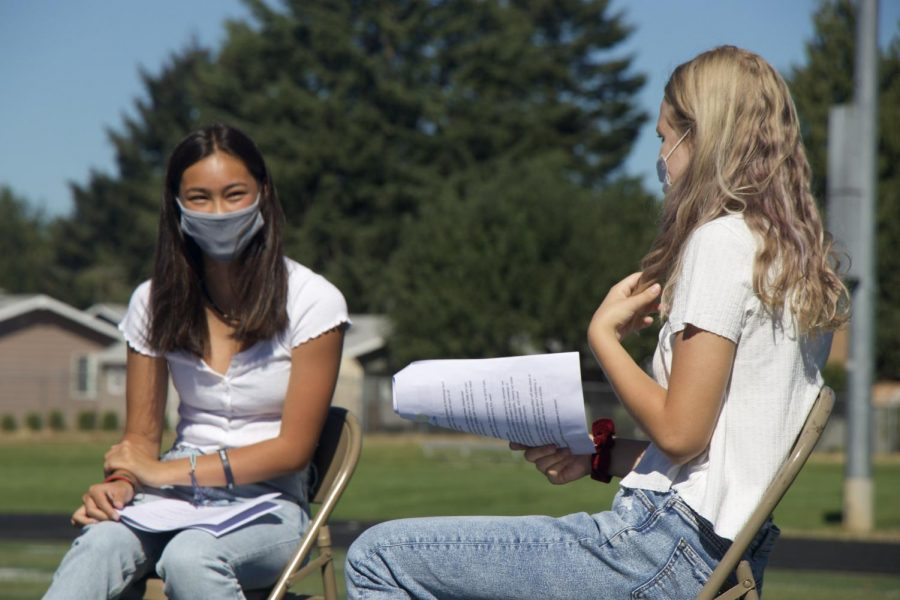
Spanish teacher Ms. Amy Gantt said that she intends to keep her classes essentially the same as they are in the distance learning format, just interacting with some students online while others in person.
“My thought is that they will be receiving the same instruction, they will be hearing my voice, all at the same time,” Ms. Gantt said. “They’re going to get the same lesson… Now, some people benefit more from being in person… and maybe being closer in proximity to the actual instruction. I can see how some people could benefit from that. Some people are thriving in [the distance learning] environment, depending on who they are as an individual. So, I think each family has to weigh out what’s best for their individual child.”
Ms. Gantt said that she isn’t worried about her ability to teach in the hybrid format, but more so about having to manage many different logistical components of the model at once, and becoming distracted in doing so.
Gathering with students in a classroom now will be much different than it was before the pandemic, with lots of rules to regulate that weren’t there before: masks up, windows open, door ajar, hands sanitized, desks cleaned, and distance enforced — then continue and repeat again for the next class period.
“I feel like there’s going to be a lot more things to manage and handle, when you’ve got some people in front of you, some people online, making sure people are wearing their masks,” Ms. Gantt said. “I like to walk around the room [when teaching]… I can’t do that. I’ve got to make sure and plant my feet, like nail my feet to the ground in the front of the classroom.”
Because of all these factors to juggle at once, Ms. Gantt said she feels “nervous.”
“Am I capable of my mind going in so many different directions at once?” she said. “And then making that last for the day, because it can be exhausting.”
Ms. Gantt said she thinks that being in person will help students socially and mentally, and that it will “help us feel more like a community.” However, she said that she doesn’t think it will result in better productivity in classes. “As far as stepping up the pace, I don’t know that that would necessarily happen,” she said.
Mr. Swanson also feels that with the hybrid model, there will be less productivity and progression in his classes, which have been going fairly well in the online format.
“I think it will be harder to do school because of the change,” Mr. Swanson said. “We have weeks of transition to hybrid, and that means I’m going to lose class periods. And while I think it’s important to teach kids these kinds of things about being safe, I still have a really tight schedule for my AP classes, and I’m going to lose class periods. So I think maybe education is not going to be as good.”
In addition to losing class time in the bustle of transitioning to a new mode of learning, Mr. Swanson expects that challenges and difficulties will arise that he and other educators haven’t yet considered.
He recalled the switch to digital learning last spring, when teachers had to make adjustments and figure out the best way to conduct online instruction, sometimes learning from mistakes along the way.
“I feel like when we switch to hybrid, we’re going to have those same problems because there are things that we can’t anticipate,” Mr. Swanson said.
Mr. Swanson said that despite the advantages of in-person learning, there will also be detriments for some people. Though he said he has students who are “struggling emotionally” with distance learning and will benefit from returning to campus, there will be a similar amount of students “for whom this is more difficult, to come back.”
In-person learning has its own stressors, Mr. Swanson said, that are alleviated by working remotely, like the pressure of seeing and being seen by others.
“I haven’t tucked my shirt in since March of last year, I haven’t worn a tie,” Mr. Swanson said. “All that stress you go through, when you’re deciding, am I going to really put makeup on today? Do I need to shave? All those decisions you make about grooming — I don’t have that issue now… So, I think it will be an even number of people who will have a hard time adjusting back to seeing a lot of people again.”
Ms. Schieber said that — considering the pros and cons of returning to campus, the risk of COVID-19 and the slow rollout of vaccines, and the benefits and downfalls of the hybrid model — she has been thinking about the decision to restart in-person classes in terms of risk versus reward.
“The reward is kids get to see each other, you get to see your teachers face to face,” she said. “But at the same time, this isn’t going back to normal school. Everyone’s going to have to be spaced out, only half the people at a time. A lot of hands-on or group work activities and stuff, we’re just not going to be able to do, because it’s not safe. And so, a lot of what makes school fun is kind of taken out of the equation.”
With teachers looking to strike an equal balance between students at school and students at home, Ms. Schieber said she wonders whether it is “worth it” to return, if many teachers will be conducting classes just the same as they do in digital learning — though she did say that it could be “uplifting” just to be physically present with other students.
“I’m not saying I don’t think there are some advantages to it,” Ms. Schieber said. “But is that — what we’re getting out of it — is it worth it, worth the risk? And I don’t know. I really don’t know.”
“We’re going to do the best we can,” she said. “I mean, we always do. But it’s a really tough situation, and I think a lot of us, and myself, are feeling just upset that we’ve been placed in this situation where our choice is our health and safety or our jobs, and that’s really what it feels like right now.”


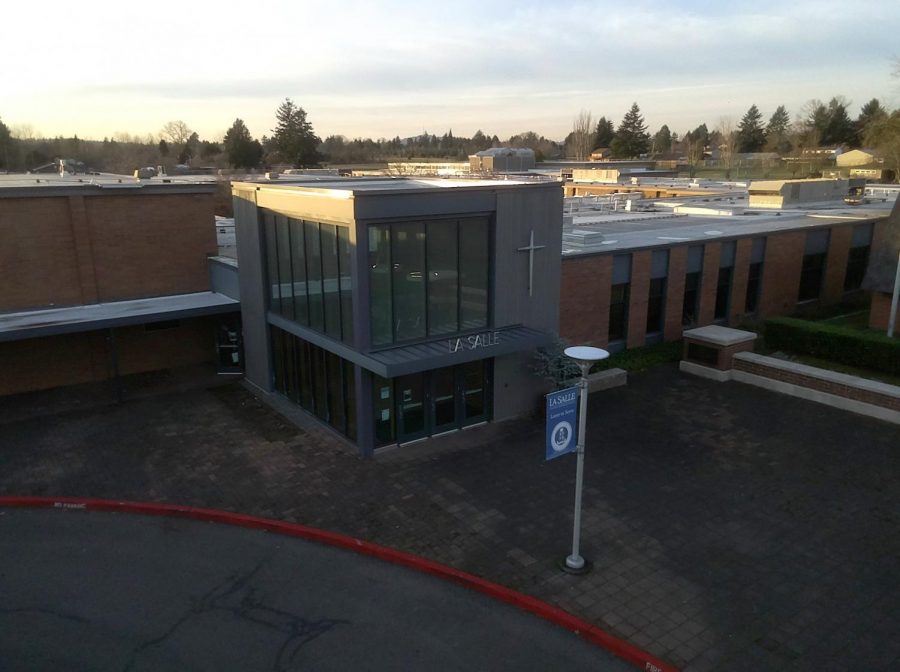
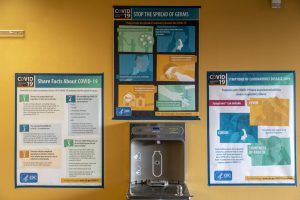


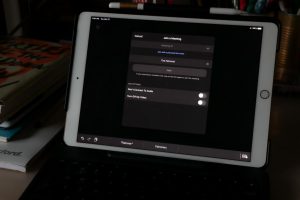
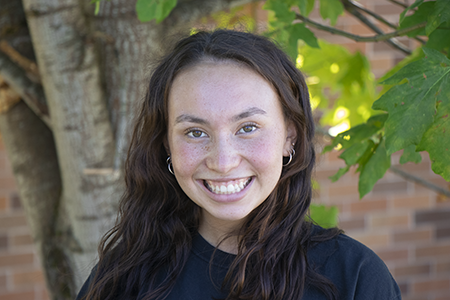



Tom McLaughlin • Jan 24, 2021 at 9:03 pm
Another outstanding job of writing, Maddie. Thank you for serving La Salle.
Liane Hansen • Jan 21, 2021 at 6:53 pm
Thank you Maddie for another impressive article. You are an outstanding journalist.
“Enter to Learn. Leave to Serve.”
Matthew 20:28
“Just so, the Son of Man did not come to be served but to serve and to give his life as a ransom for many.”
Can we not sacrifice our Social Life for a few more months to potentially save the lives of others?
What values are we honoring by rushing to open the school, instead of awaiting the vaccine?
Who are we, as La Sallians, serving?
Collin Olson • Jan 21, 2021 at 12:51 pm
Great article, Maddie. I think it is very important for these teachers’ voices to be heard.
It is crucial that there be a realistic sense of the severity of this virus in making a decision that affects so many people and their families, and in the administration’s choice to return to school I find that to be lacking. While it is true that students and teachers are missing each other and an in-person learning environment, we need to remember why we have been avoiding these things.
The simple fact is that the virus has not dwindled. The situation is no different than it was at the beginning of the school year, and in fact it has become more dangerous.
While I have no doubt that the administration has been striving to make this plan as safe as possible, it is far from airtight. When it is a matter of life and death for students and staff, the “honor rule” (i.e. taking students’ word that they are following COVID protocols outside of school hours) should not come into play; teachers should also not be put into such a disrespectful position as to be pressured into returning to work and risking their health without an alternative option.
I do not discount the difficulty of remote learning or the detriment to students’ social and academic development, but it sounds like these teachers recognize the plain fact that facing these struggles right now is preferable to someone becoming ill (or worse) because of a premature decision. The reason that we are all struggling so much right now is so that we can all return to normal in good health when the time comes (i.e. post-vaccination).
I’m asking the administration to 1) deeply consider the immense duty that falls on you to keep students and staff as safe as possible as well as the responsibility the school would take in the event of a COVID infection; and 2) follow the teachers rather than having them follow you, as they are the real heart of the school’s operations, and offer them an alternative remote option (as you have offered students).